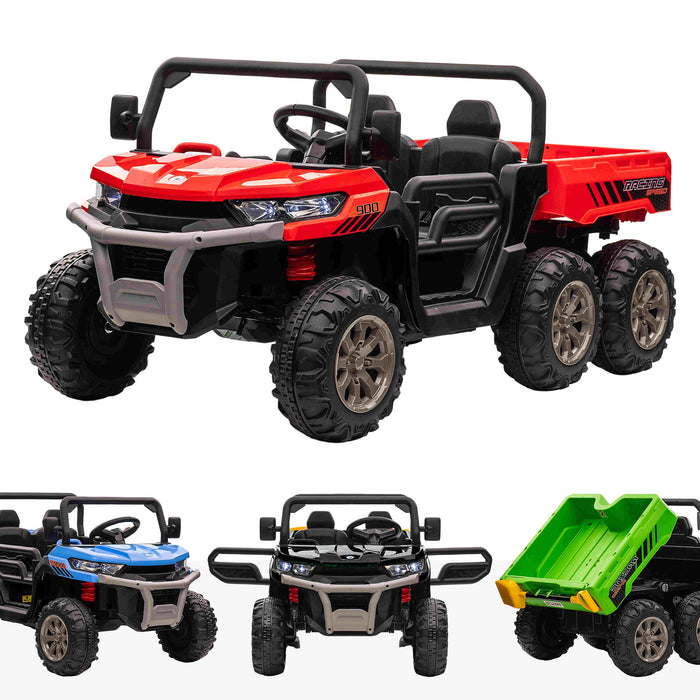Handy Tips To Deciding On Kids Ride On Cars
Handy Tips To Deciding On Kids Ride On Cars
Blog Article
What Safety Features For Ride-Ons Should I Consider? What Are The Advantages And Disadvantages?
It is essential to think about safety features when you are choosing the best car for your kids. These features will help keep them safe and happy while playing. Seat Belts are one of the most crucial security features to be aware of.
Seat belts help keep your child safe in the ride on car. This decreases the chance of them falling or being ejected from the vehicle during play. The seat belts add an additional layer of protection for your child, especially in the case of sudden stops or abrupt turns.
Cons – Some ride-ons, especially those intended for children, do not have seatbelts. Belts for seats can be uncomfortably for children, which can cause them to resist or refuse to wear it.
Sturdy Construction
Pros – A ride-on made of strong construction and top quality materials is strong and durable and provides safety and dependability for a long time. It can withstand the rigors of playing and offer stability during use.
Cons - Strong materials are usually expensive and may not be affordable for some families. The ride-on cars may also be less maneuverable and portable when they're made from heavier materials.
Low Center Gravity -
Pros: Ride-on cars that have a lower centre of gravity have a lesser chance of tipping over. This lowers the likelihood of an accident or injury. They are more stable and have better balance. stability, especially when turning or performing maneuvers.
Cons - Ride-ons with low center-of-gravity could sacrifice ground clearance in order to be off-road capable. This could restrict the range of riding.
Parents Remote Control –
Pros - Remotely controlled ride on cars enable parents to supervise and supervise their child's activities. They also provide a higher degree of security as well as parental supervision. Parents can intervene to prevent accidents, navigate through difficult terrain, and assist their child in an emergency situation.
Cons Parents who control their children's remotes could restrict the independence and autonomy of children, since they depend on their parents' assistance and guidance during play. Furthermore, models that can be controlled remotely may cost more than models that have manual controls.
Speed Limiters Speed Limiters
Pros: Ride-on vehicles that have speed limits or speed settings that can be adjusted let parents determine the maximum speed of the vehicle to reduce collisions and accidents. They can also increase the speed to the max as the child's confidence increases.
Cons – Some riders may surpass the speed limiters rapidly. This can lead to frustration with the vehicle. In addition, the speed limiter may not be included on all models. Also, it could require an extra feature or accessory.
Safe Start Technology -
Pros - Safe Start technology ensures that the ride-on car can stop and start quickly, reducing the chance of sudden jerks or lurches that could startle or destabilize the child. It makes riding more enjoyable and safe.
Cons – Ride-ons that come with safety-start technology may be more costly. Moreover, children may not find the gradual acceleration to be more interesting or exciting as fast starts and stop.
Visibility Enhancements
Pros: Ride-on vehicles that have enhanced visibility such as taillights and headlights made of or reflectors can improve visibility in dimly lit or low-light conditions. They increase security by making the vehicle more visible to drivers or pedestrians.
Cons - Visibility enhancements can drain the battery more quickly or create more complexity in the ride-on car's design and increase the chance of failures or issues with maintenance.
If you take a look at these security features and weigh their advantages, you'll be able choose one that is focused on the safety of your child while offering them the most enjoyable and thrilling playtime. Take a look at the best kids cars for site info including electric car ride, remote control childrens electric cars, cars pedal car, lambo toy car, toy in car, car electric ride on, childs car toy, car toy car toy, two seater electric cars, race car toy and more. . 
What Kind Of Assembly And Maintenance Requirements Are There For Kid's Ride-On Cars?
Making and maintaining toys for ride-ons for children is crucial for their safety, functionality and long-term durability. Here are the most common assembly and maintenance requirements of kid's rides-on-cars.
Most ride-on vehicles arrive partially assembled, and may require assembly. Attaching the wheels, steering wheel, seats and other accessories to the ride-on vehicle according to the instructions of the manufacturer is the most popular method.
Follow the assembly guidelines carefully and ensure that each component is securely secured. To complete the assembly, use the tools and accessories provided.
Cleaning
To keep your ride-on car in top condition and working efficiently, it is essential to regularly clean it. Use a dampened soft cloth with mild soap and water to clean exterior surfaces.
Be mindful of areas prone to buildup like the wheels, tires and undercarriage. Use a toothbrush or a brush to remove grime from difficult-to-access areas.
Do not use harsh cleaners or water jets with high pressure, which can damage the paint and electronic components on car.
Battery Care -
If the ride-on vehicle is powered with a rechargeable battery proper battery care is essential to maintain performance and prolong battery life. These tips will assist you in taking care of your battery.
Charge the battery prior to each use, and completely after. This will ensure you get the best performance.
Avoid charging too much or leaving the battery connected to the charger for extended durations, since this could harm the battery and shorten its lifespan.
When not in usage when not in use, store the ride on car and battery away from direct sunshine or extreme temperatures.
The battery terminals should be checked regularly to check for corrosion and damage. They can also be cleaned with wire bristles or terminal cleaner, should it be required.
If the battery no longer charges or displays signs of damage, replace it.
Tire Maintenance -
Examine the tires frequently for indications of damage, wear, or loss of pressure. Inflate the tires to the recommended pressure with a bicycle pump or air compressor if needed.
Look for debris and foreign objects in the tread pattern that may cause punctures. Replace the damaged tires and eliminate any obstructions.
Lubricate wheel bearings and axles regularly to reduce friction and ensure smooth movement.
Periodic repairs and replacements
Ride-on cars can require repairs or replacement parts due wear and tear or damages.
Be aware of signs of malfunction and deterioration like unusual noises, loss or power, or erratic behaviors. Consult the manufacturer's instructions or contact customer service to get help on troubleshooting or repair options.
Replace worn-out or damaged parts promptly to stop further damage and ensure the safety and performance of the ride-on automobile.
By following these guidelines for maintenance and assembly, you can keep your child's car in top condition and enjoy hours of fun and safe playing time for your child. Check out the recommended read more for kids ride on cars for blog examples including childs car toy, ride ons, ride a toy, car on ride, two seater childrens electric cars, toy car for car, toy in car, electric two seater cars, ride of car, toy car and more. . 
How Do You Determine An Appropriate Budget For Your Ride-On Kid's Vehicle Purchase?
Planning a budget for a car ride for your child involves taking into account many factors such as quality, durability and long-term use. Also, you should consider your financial status. Find the most affordable price to fit your budget by conducting some research about average prices.
Begin by researching the typical cost of a ride-on car with the features you desire. You can find pricing information on different models by visiting online retailers, toy shops and manufacturers' websites.
What are the must-have features?
Take note of the features essential to your child's safety as well as enjoyment. Ride-on cars that have features like realistic sounds and seat belts, remote controls, and functional headlights could cost more.
Prioritize the features you want to use according to your child's interests and your budget limitations.
Take into consideration durability and longevity
Pick ride-on cars constructed of durable materials such as premium plastics or metals. They can withstand repeated use and outdoor conditions.
It is also possible to inquire from other parents about their opinions as well as read the reviews to assess the reliability of a vehicle. A higher upfront investment in a well-built ride-on car can result in savings for the long run by avoiding frequent repairs or replacements.
Compare prices at various retailers
Compare prices of different retailers to discover the best value for your dollars. Look up local toy stores, department stores and specialty shops for competitive pricing and promotions.
Keep an eye out for any sales, discounts or clearance sales. They will help you get a better deal on your purchases without compromising the quality of your purchases.
Include extra costs in your budget -
Be sure to include any additional costs you might incur when buying a car ride-on for your child. These include shipping charges and taxes, as well as any additional accessories (e.g. batteries for extra batteries, safety equipment).
Budget for the total cost, including any accessories or maintenance costs.
Set a realistic budget -
Make a budget that is realistic in accordance with your financial and research situation. This will help align your priorities with your goals. Determine the amount you're willing to pay for a child's ride-on while taking into consideration features such as durability, endurance, or long-term use.
Don't spend too much money on items which won't make any significant impact on your child's.
Think about Long-Term Value
The child's ride-on vehicle should be evaluated in terms durability, flexibility and capacity to grow with the child. In the end investing in an expensive, feature-packed car may prove more beneficial than less expensive alternatives.
When buying a kid's ride-on vehicle, establish a price range and compare features, durability and lifespan. This will allow you to get the best value for your dollars. When you're on a the budget, focus on features that matter most for your child's safety and fun. Have a look at the recommended ride on toys kidscars.co.uk info for blog examples including car toy car toy, electric ride along car, ride ons, digger ride, ride on car, race car toy car, childs electric ride on car, ride ons, ride electric car, childrens digger and more. .